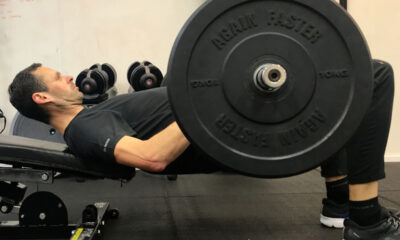
Elsey Davis has made big strides away from the marathon this year and she shares her favourite training session.
After deciding to take a break from the gruelling marathon, the Bristol and West runner has won races in the UK and overseas (well Guernsey) in 2018 and ran numerous personal bests from 5k up to 10k on the road and she has also debuted over 800m and 1500m on the track.
Davis has broken 34 minutes for 10k not once, but three times this year. Twice on the road, winning the Cardiff 10k and finishing sixth at the Brighton 10k, as well as a 33:33.20 clocking at the Highgate Harriers Night of the 10,000m PBs. It’s clear to see her new approach is paying off.
When asked about her favourite session, she says: “My favourite sessions are ones with high volume and variety. I like the challenge of a big session, one that makes me equally excited and nervous beforehand. It’s probably of the thought of the hard graft and pain to come.”
It’s these sessions that athletes often see as the most valuable in any block of training. The slightly masochistic nature of the long distance runner that many of us will be able to relate to. Running is a sport that rewards hard work.
“They feel like they are the ones that count,” explains Davis. “Even if they don’t go completely to plan you’re getting a whole load of fitness in the bank.
“I train on my own a lot so the variety keeps my mind active too. A mixture of efforts and recoveries breaks up any workout psychologically.”
So what sessions does Davis have in mind? What helped the diminutive runner clock a new PB of 16:21.63 for 5000m at the Sport City BMC grand prix in May?
Davis says: “A recent track session went like this: 2 miles warm up, 3 x 1600m, 400m jog, 4 x 400m with a 100m jog, 400m jog, 2 x 1600m, 400m jog, 2 x 200m (30 sec recovery) and 2 miles cool down.”
By the time the session is finished an athlete will have covered over 12 miles, with 6.25 of those miles done at pace. This is a session you might expect to see done by a 10,000m runner with 10,000m of effort in duration.
The other interesting thing to consider is that Davis does fast efforts, the 400s and 200s, on legs that won’t feel too dissimilar to mid race in a 10,000m. The surges, tactics and moves of a track race are something that need to be taken into account in training too.
The 400s will flood the legs as if covering a mid race pick up in pace. The athlete might have to follow a move by the favourite or cover a gap that has opened up early on. How often do we see a fast lap just as the pace maker drops out?
Yet in this day and age, a fast kick means more than anything. Often the pace drops after a pacemaker steps aside and the athletes line up for the sprint to the line, even if it’s still four to five kilometres away.
The last two fast 200m efforts are designed to simulate the final push to the line. After almost 9,600m of effort in this session the athlete and their legs probably just want to cool down and go home. Yet the body and mind need to be trained for racing.
This might also be a perfect opportunity to practice visualisation. Picturing the final sprint of your A race when your body wants to rest. Imagine feeling strong as you pass all your opponents and dip for the line.
Prepare the mind in this way and it is more capable of dealing with the eventualities on the day. Rather than the surprise of being in a leading position or chasing down flagging rivals, your mind has been there before. Instinct kicks in and you don’t even need to think about that extra push.
Davis adds: “Probably the best part is the bit afterwards… sitting on the sofa with a nice cup of tea, proudly uploading the completed session to training peaks.”
That satisfaction of a session well done is something all runners can relate to. The work isn’t done yet though. “I know the rest after the session is as important as the workout itself,” she says. “If my next couple of days aren’t easy then my body can’t adapt. Not every session needs a sprint finish.”













